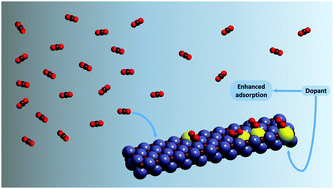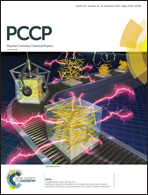Tuning transition metal carbide activity by surface metal alloying: a case study on CO2 capture and activation†
Abstract
CO2 is one of the main actors in the greenhouse effect and its removal from the atmosphere is becoming an urgent need. Thus, CO2 capture and storage (CCS) and CO2 capture and usage (CCU) are intensively investigated technologies to decrease the concentration of atmospheric CO2. Both CCS and CCU require appropriate materials to adsorb/release and adsorb/activate CO2, respectively. Recently, it has been theoretically and experimentally shown that transition metal carbides (TMC) are able to capture, store, and activate CO2. To further improve the adsorption capacity of these materials, a deep understanding of the atomic level processes involved is essential. In the present work, we theoretically investigate the possible effects of surface metal doping of these TMCs by taking TiC as a textbook case and Cr, Hf, Mo, Nb, Ta, V, W, and Zr as dopants. Using periodic slab models with large supercells and state-of-the-art density functional theory based calculations we show that CO2 adsorption is enhanced by doping with metals down a group but worsened along the d series. Adsorption sites, dispersion and coverage appear to play a minor, secondary constant effect. The dopant-induced adsorption enhancement is highly biased by the charge rearrangement at the surface. In all cases, CO2 activation is found but doping can shift the desorption temperature by up to 135 K.



 Please wait while we load your content...
Please wait while we load your content...